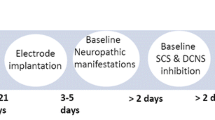Abstract
Electrophysiological and topographical properties of the spinal tract systems involved in two functional types of startle reflexes were studied in chloralose anesthetized cats: a high-threshold reflex produced by intense peripheral nerve stimulation (spinobulbo-spinal, SBS, reflex) and a low-threshold reflex evoked by tactile (T-reflex) and acoustic (A-reflex) stimulation. Maximum conduction velocity of descending transmission of the high-threshold reflex, at 30 m/sec, was perceptibly lower than that of low-threshold reflexes, at 85 m/sec for T-reflex and 100 m/sec for A-reflex. Mean conduction velocity for SBS and T-reflexes were 40.2 and 70.8 m/sec respectively. Perceptible differences were also found in the topography of spinal and especially ascending pathways of these reflexes. It was established by partial spinal cord destruction that accomplishment of T-reflex depended on the integrity of ascending pathways of the dorsal and dorsolateral funiculi and the SBS reflex on preservation of the dorsolateral, ventrolateral and (partially) of ventral funiculi. Descending pathways of the reflexes under study were revealed mainly in the ventrolateral and ventral funiculi and those of the SBS reflex mainly in the first of these. Findings also show the noticeable similarity between the organization of both T- and A-reflex descending pathways. The functional organization of the spinal pathways of a variety of startle reflexes is discussed.
Similar content being viewed by others
Literature cited
A. P. Gokin, “Levels of transmission of acoustic and tactile “startle reflex“ in the cat reticular formation,” Neirofiziologiya,17, No. 5, 727–731 (1985).
A. P. Gokin and M. V. Karpukhina, “Reticular structures involved in startle reflexes in response to somatic stimulation of different modalities,” Neirofiziologiya,17, No. 3, 380–390 (1985).
A. P. Gokin and M. Slovachek, “Reticular structures and reticulo-spinal pathways involved in initiation and inhibition of spino-bulbo-spinal activity,” Neirofiziologiya,8, No. 4, 373–383 (1976).
Yu. Pavlasek, A. I. Pilyavskii, P. Shtraus, and P. Duda, “Efficacy of synaptic influences of ascending pathways of different spinal cord funiculi on reticulo-spinal neurons in the cat,” Neirofiziologiya,11, No. 3, 254–264 (1979).
N. N. Preobrazhanskii and Yu. P. Limanskii, “Activation of reticular neurons of the medulla by visceral afferents,” Neirofiziologiya,1, No. 2, 177–184 (1969).
D. Albe-Fessard, A. Levante, and Y. Lamour, “Origin of spinothalamic and spinoreticular pathways in cats and monkeys,” in: Pain, Vol. 4, J. J. Bonica, ed., Raven Press, New York (1974), pp. 157–166.
D. Angaut-Petit, “The dorsal column system. 2. Functional properties and bulbar relay of the postsynaptic fibres of the cat's fasciculus gracilis,” Exp. Brain Res.,22, No. 5, 471–493 (1975).
P. Ascher and K. Segure, “Organisation efférents de la réaction de sursaut du chat anesthésié au chloralose,” J. Physiol.,59, No. 1, 81–100 (1967).
A. G. Brown and D. N. Franz, “Responses of spinocervical tract neurones to natural stimulation of identified cutaneous receptors,” Exp. Brain Res.,7, No. 3, 231–249 (1969).
F. Cervero, A. Iggo, and V. Molony, “Responses of spinocervical tract neurones to noxious stimulation of the skin,” J. Physiol.,267, No. 2, 537–558 (1977).
P. Duda and J. Pavlasek, “Localization of intraspinal longitudinal systems participating in the spreading of visceromotor activity,” Physiol. Bohemosl.,26, No. 2, 149–157 (1977).
A. P. Gokin, P. G. Kostyuk, and N. N. Preobrazhensky, “Neuronal mechanisms of interactions of high-threshold visceral and somatic afferent influences in spinal cord and medulla,” J. Physiol.,73, No. 2, 319–333 (1977).
H. L. Fields, G. M. Wagner, and S. D. Andersson, “Some properties of spinal neurones projecting to the medial brain-stem reticular formation,” Exp. Neurol.,47, No. 1, 118–134 (1975).
H. L. Fields and D. L. Winter, “Somatovisceral pathways: rapidly conducting fibres in the spinal cord,” Science,167, No. 3926, 1729–1730 (1970).
L. H. Haber, B. D. Moore, and W. D. Willis, “Electrophysiological response properties of spinoreticular neurons in the monkey,” J. Comp. Neurol.,207, No. 1, 75–84 (1982).
H. G. J. M. Kuypers and V. A. Maisky, “Funicular trajectories of descending brainstem pathways in the cat,” Brain Res.,136, No. 2, 159–165 (1974).
C. Landis and W. Hunt, The Startle Pattern, Farrar and Rinehart, New York (1939).
G.-W. Lu, G. J. Bennett, and N. Nishikawa, “Spinal neurons with branches axons travelling in both the dorsal and dorsolateral funiculi,” Exp. Neurol.,87, No. 3, 571–577 (1985).
R. A. Maunz, N. G. Pitts, and B. W. Peterson, “Cat spinoreticular neurons: location, responses and changes in responses during repetitive stimulation,” Brain Res.,148, No. 2, 365–379 (1978).
M. Shimamura, I. Kogure, and Y. Igusa, “Ascending spinal tracts of the spino-bulbo-spinal reflex in cat,” Jpn. J. Physiol.,26, No. 6, 577–589 (1976).
M. Shimamura and I. Kogure, “Reticulospinal tracts involved in the spino-bulbo-spinal reflex in the cats,” Brain Res.,172, No. 1, 13–21 (1979).
M. Shimamura and R. B. Livingston, “Longitudinal conduction systems serving spinal and brain-stem coordination,” J. Neurophysiol.,26, No. 2, 258–272 (1963).
M. Shimamura and T. Yamauchi, “Neural mechanisms of the chloralose jerk with special reference to its relationship with the spino-bulbo-spinal reflex,” Jap. J. Physiol.,17, No. 6, 738–745 (1967).
I. Szabo and K. Hazafi, “Elicitability of the acoustic startle reaction after brain stem lesions,” Acta Physiol. Acad. Sci. Hung.,27, No. 2, 155–165 (1965).
Ch. G. Wright and Ch. D. Barnes, “Audiospinal responses in decerebrate and chloralose anesthetized cats,” Brain Res.,36, No. 2, 307–331 (1972).
Additional information
A. A. Bogomolets Institute of Physiology, Academy of Sciences of the Ukrainian SSR, Kiev. Translated from Neirofiziologiya, Vol. 18, No. 4, pp. 486–496, July–August, 1986.
Rights and permissions
About this article
Cite this article
Gokin, A.P. Functional characteristics and topography of spinal pathways conducting high- and low-threshold startle reflexes. Neurophysiology 18, 353–361 (1986). https://doi.org/10.1007/BF01052804
Received:
Issue Date:
DOI: https://doi.org/10.1007/BF01052804




